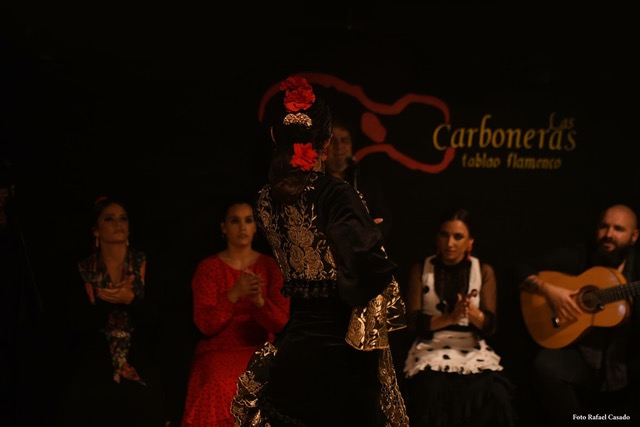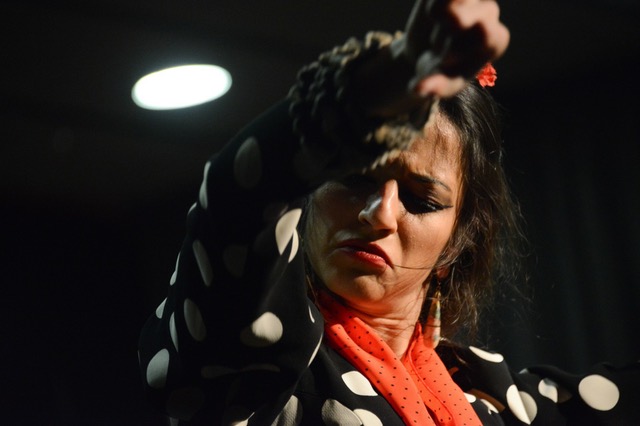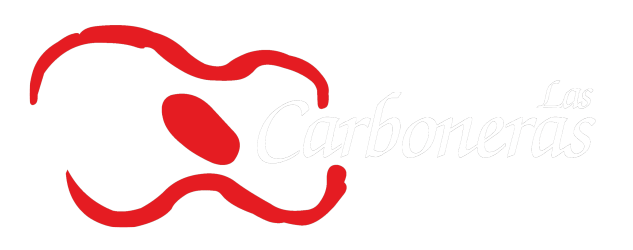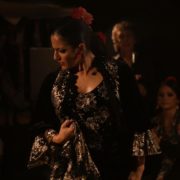Patricia Domínguez
She began her education in 2011 with 12 years at the Escuela de Flamenco Paca García, where she studied all the disciplines of dance and with greater emphasis on flamenco, also following master classes with artists such as Antonio Canales, Eva Yerbabuena, Farruquito and others.
She started her professional career in 2016, aged 17, at the Palau Dalmases in Barcelona and, to this day, she is regularly performing at Tarantos and City Hall Theater with artists such as Pedro Córdoba, Iván Alcalá, La Tana, La Fabi, Raúl Ortega, El Perla and others. She combines performances in venues such as the Poliorama Theater and the Palau de la Música with the show Gran gala Chicuelo.
She also has the privilege, since the beginning of 2018, of being a flamenco dancer at the Puro Arte tablao in Jerez, courtesy of Raúl Ortega, where she takes the opportunity to continue training with Manuela Carpio.
In 2018 he won the first prize in the concurso de baile flamenco del tablao Las Carboneras of Madrid.

Patricia Domínguez:
«For me the tablao means to undress yourself»
«From my artistic training, I would highlight that there are two people that I always remember, even if I am already working or wherever I go. I always remember their advice and they are two teachers that I had, named Eva Santiago and Susana Escoda, besides teaching me the essentials, the basic pillars of flamenco. In addition to that, the artistic training I had at the school of Paca García. Paca, who was the director, was a woman who educated with Spanish proverbs, everything she said and advised me I have got it in the sense through the Spanish proverb while I work, coinciding with people and living with others. It’s something that I find curious.

»As far as the professional thing I would emphasize that, with 17 years, Iván Alcalá, that is a dancer of Barcelona, gave me the opportunity to begin. If he had not seen something in me at school and given me the opportunity, I do not know what would have happened to me, I do not know when I would have started dancing. I started in El Principal with him and, as a result of that, everything has been very nice and very neat, really. Another very important thing that marked me before and after in the professional side is when, thanks to Iván, I meet at the tablao City Hall in Barcelona with Raúl Ortega, a dancer from Madrid who lives in Jerez and has his own tablao, and when he saw me dance he gave me the opportunity to go to Jerez. I had a crazy desire to visit that land, that cradle of flamenco where I learned many things about flamenco that I did not know. Above all, everyday things about flamenco, what it was like to live with flamenco, that in Barcelona I had not had the opportunity to experience it every day since I got up until I went to sleep. That’s something that, since I met him, I go annually, I have my own musician friends there and Jerez is already part of my life.

»And what does it mean to dance in a tablao for me? For me the tablao means to undress, to be on top of the tablao is to undress, to be transparent, there is no trap or cardboard, as you feel that day with your experiences, with what you have, you are that person that day and what happens that day is never repeated again. In a show we have lights, we have large stages, choreographies, all that covers many of the things that we can carry inside. And in the tablao, on the other hand, it is the opposite. In addition to the direct one-on-one in moments of seconds with the guitarist or with the cantaor, the improvisation, which is lived in the tablao daily, is part of the tablao. For me it’s the beauty of flamenco. And to meet people. The beautiful thing about tablao is that, wherever you go to dance, you always meet new people, new people sing to you, new people play to you. All these are new sensations to learn and to share. And sharing in a tablao is something wonderful. In fact it’s what I’ve been doing since I was 17 and I’m not myself without it»







